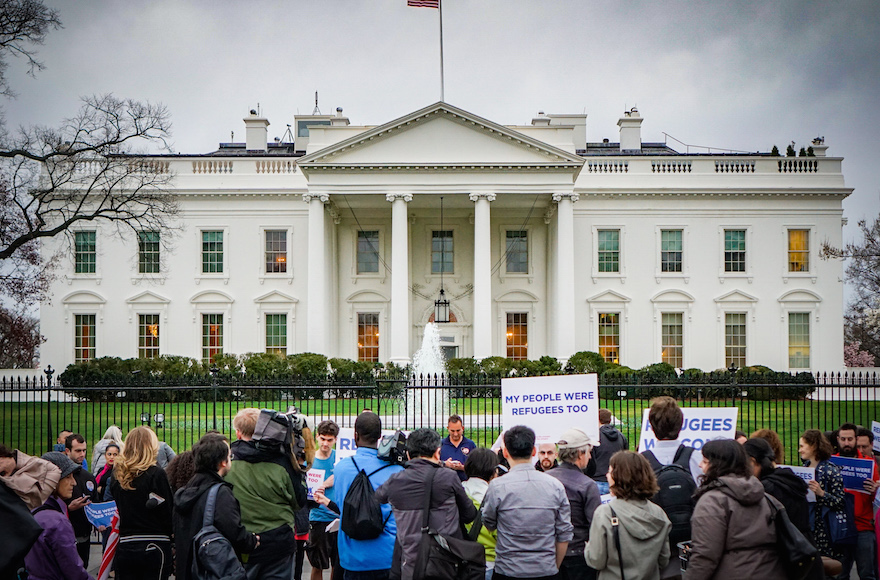It would be an understatement to say this has been a challenging census, made more turbulent by actions taken by the Trump administration.

This is the first of a two-part series— Fighting for a Fair and Accurate Census—detailing this year’s unprecedented attacks on the U.S. census. The series is written by Vanita Gupta, president and CEO of The Leadership Conference on Civil and Human Rights, and Gary D. Bass, founder of OMB watch, a nonprofit research and advocacy organization promoting greater government accountability and transparency.
Find Part 2—The Politics of the 2020 Census—here.
An accurate census count ensures that every person in the United States is fairly represented—making it a vital part of our democracy. Yet the Trump administration has spent years attempting to undermine the 2020 count and falsely construct a whiter portrait of America.
Now, Census Bureau experts warn they won’t have time to produce accurate data for fast-approaching reporting deadlines. Leaders across the government must swiftly act to restore integrity to the 2020 census—especially given what’s at stake for the political and economic power of communities.
Last week census advocates logged a win: A federal court ordered the Trump administration to produce proof explaining the need for the rushed close to the 2020 census. But how did it come to this? And how can the U.S. avoid the politicization of the census moving forward?
Ten Years of Preparation in Lead-Up to 2020 Census
Preparation for the 2020 census began years ago. Thousands of community leaders, volunteers, faith leaders, teachers, librarians, labor organizers, tribal councils, government officials, foundations and business owners came together to promote a fair and accurate count.
Baked into the U.S. Constitution, the census is used to determine the number of congressional representatives each state receives along with the number of electors in the Electoral College. It is also used to draw local, state and congressional districts for fair representation.
The census also determines the allocation of roughly $1.5 trillion a year in federal funds for programs delivered in our communities—from health care to education to economic development. It is used to enforce anti-discrimination laws, address environmental protections and locate key community services such as senior centers, health clinics and schools. It is also essential to businesses as they use the data to determine where to open storefronts and hire people.
As we grow increasingly diverse as a nation, the census gives us a picture of who and where we are so we can make decisions based on accurate data. This means the census is important for every community.
That is why the nonprofit and philanthropic sectors joined hands to encourage people to fill out the census. It would be an understatement to say this has been a challenging census, made more turbulent by actions taken by the Trump administration.
2020 Census Under Extreme Threat
The accuracy of the nation’s 2020 census was threatened by numerous factors, including inadequate early funding, substantial distrust of the federal government among many historically undercounted communities, and uncertain preparation by the U.S. Census Bureau for a new internet response option and the challenges of the digital divide in rural areas and poor communities.
With foundation funding, community coalitions sprang up throughout the country to educate people who are historically undercounted as to why they should fill out the census. Then, at the eleventh hour, the Trump administration tried to add an untested question on citizenship status, deepening the already existing fear and distrust of the federal government and the confidentiality of the collected data.
After it was defeated in court, widespread confusion continued as to whether the citizenship question was or was not on the questionnaire. Community groups and the trusted voices they represent intensified their outreach, poised to knock on doors and hold census parties in churches, schools, libraries, ethnic shopping centers and health clinics.
Then the pandemic hit.
The Census Bureau’s own research showed that those who are hardest to count—people of color, young children, low-income families, people in rural areas, renters, and people experiencing homelessness—were likely to be even harder to reach in 2020. COVID-19 was reason to double down on the concerns of an undercount and fears that political power would be unfairly tilted in a way that does not reflect an accurate makeup of the country. The consequences would be dire, as federal funding would not reach places most in need, locking in inequality exacerbated by the pandemic for the next decade.
Getting people to fill out the census was crucial.
Trump Administration Sows Chaos About Census Status
On April 13, as the pandemic shutdown much of the country, the Census Bureau responded by adjusting its carefully constructed plan to extend data collection by three months, from July 31 to October 31. Instead of the first data product, the apportionment report which determines how many congressional seats each state gets for the next decade, coming out by December 31, the experts within the Census Bureau suggested adjusting its release to April 30, 2021 to allow necessary time for data processing and tabulation given the extended data collection period. Data for redistricting sent to states would be delivered by July 31, 2021 instead of April 1, 2021.
Because the apportionment and redistricting deadlines are set in law, the Trump administration initially asked Congress to move the statutory deadlines for this census cycle, which the House of Representatives promptly did.
In the meantime, starting in late June, the administration began adding four political appointees to the Census Bureau—an unprecedented action for an agency largely run by nonpolitical career staff. These appointees had little Bureau experience and minimal qualifications; they occurred while the census was already well underway.
Before the Senate acted, President Trump issued a memo at the end of July declaring, for the first time in this country’s history, his plan to exclude undocumented individuals from the apportionment count. This would cause some states and their residents to lose congressional seats and significantly alter political power.

Within days of the president’s memo, Commerce Department Secretary Wilbur Ross, who oversees the Census Bureau, directed the Bureau to create a rushed plan that prematurely cut off efforts to count everyone to the end of September and greatly compressed the schedule for checking for errors in order to meet the December 31 deadline for releasing the apportionment data. This would allow Trump time to release apportionment data excluding undocumented immigrants—even if he lost the election.
And, of course, the Trump administration reversed course and withdrew its request for the Senate to approve extending the statutory deadlines that the House already addressed.
Concerned Activists Fight Back
Organizations, individuals and state and local governments concerned about the abrupt shortening of the census and the Trump efforts to rig the apportionment immediately filed lawsuits to stop both. The Supreme Court eventually allowed the Bureau to stop the count two weeks earlier than planned after significant uncertainty and confusion. A case on whether undocumented individuals can be excluded from the apportionment was heard by the Supreme Court at the end of November after three lower courts said the Trump plan was unlawful, and in one case, also unconstitutional.
Keep reading…
You may also like:





